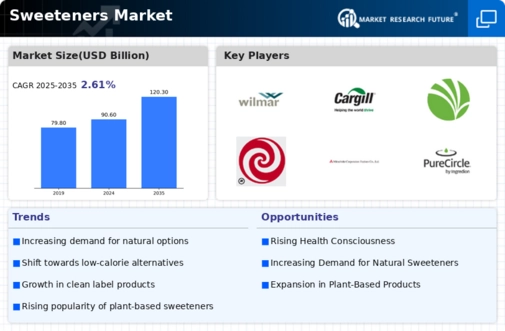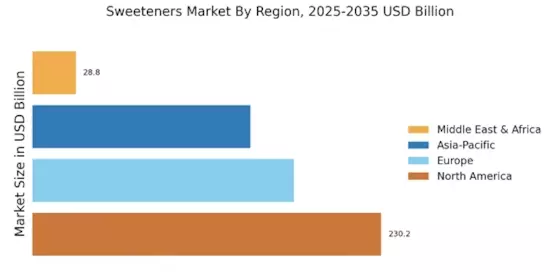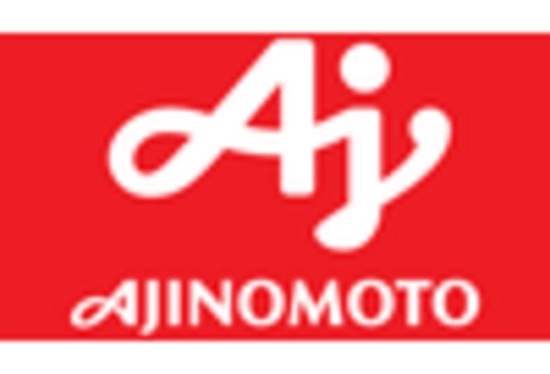The Sweeteners Market is currently characterized by a dynamic competitive landscape, driven by increasing consumer demand for healthier alternatives to sugar and the growing trend towards natural sweeteners. Major players such as Cargill (US), Archer Daniels Midland (US), and Tate & Lyle (GB) are strategically positioning themselves through innovation and regional expansion. Cargill (US) has focused on enhancing its product portfolio with natural sweeteners, while Archer Daniels Midland (US) emphasizes sustainability in its sourcing practices. Tate & Lyle (GB) is investing in research and development to create low-calorie sweeteners, thereby shaping a competitive environment that prioritizes health-conscious products and sustainable practices.
In terms of business tactics, companies are increasingly localizing manufacturing to reduce costs and optimize supply chains. The Sweeteners Market appears moderately fragmented, with a mix of large multinational corporations and smaller niche players. This structure allows for a diverse range of products, catering to various consumer preferences. The collective influence of key players is significant, as they drive innovation and set industry standards, which smaller companies often follow.
In August 2025, Cargill (US) announced a partnership with a leading biotechnology firm to develop a new line of plant-based sweeteners. This strategic move is likely to enhance Cargill's position in the natural sweetener segment, aligning with consumer preferences for healthier options. The collaboration may also expedite the development process, allowing Cargill to bring innovative products to market more swiftly.
In September 2025, Tate & Lyle (GB) launched a new range of low-calorie sweeteners designed specifically for the beverage industry. This initiative reflects the company's commitment to addressing the growing demand for healthier beverage options. By targeting this specific market segment, Tate & Lyle is not only diversifying its product offerings but also reinforcing its reputation as a leader in sweetener innovation.
In October 2025, Archer Daniels Midland (US) unveiled a new sustainability initiative aimed at reducing its carbon footprint across its supply chain. This initiative underscores the company's dedication to environmental responsibility and may enhance its competitive edge as consumers increasingly favor brands that prioritize sustainability. By integrating sustainable practices into its operations, Archer Daniels Midland is likely to attract environmentally conscious consumers and strengthen its market position.
As of October 2025, current competitive trends in the Sweeteners Market include a pronounced focus on digitalization, sustainability, and the integration of artificial intelligence in product development and supply chain management. Strategic alliances are becoming increasingly vital, as companies collaborate to leverage each other's strengths and enhance their market offerings. Looking ahead, competitive differentiation is expected to evolve from traditional price-based competition towards innovation, technological advancements, and supply chain reliability, reflecting a broader shift in consumer expectations and market dynamics.


















Leave a Comment